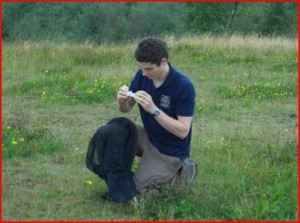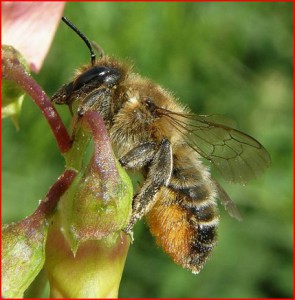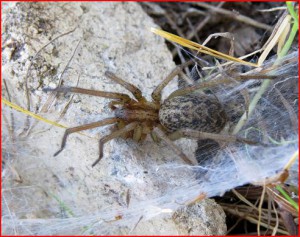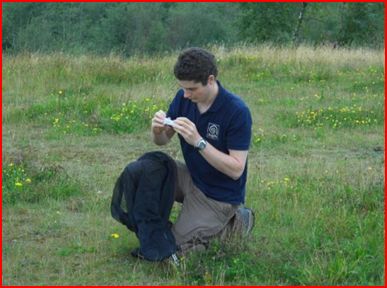
Its been a busy time over the last few months, which is probably why the time has flown by so quickly. I can’t believe that a whole year has passed and I have now finished my Urban Biodiversity Apprenticeship with Buglife. Looking back I have been pretty busy and I’ve been lucky to spend time with experts both doing fieldwork and at the Scottish National Museums. I have attended numerous workshops and even run my own introduction to invertebrates. Most importantly of all I have spent lots of time doing fieldwork and identifying the species I’ve found. This apprenticeship has also opened my mind to how vast the world of invertebrates really is and although I have learned a huge amount, a lifetime is needed to master these groups. Not only have I looked at invertebrates, but I have also learned about their habitats by attending courses on plant and tree identification. Since invertebrates live at a much smaller scale than us, its important to look at even small differences in habitat, which can make life and death differences for many invertebrates.
Having now finished my surveys on brownfield sites I have counted up the number of species recorded and it just shows how valuable these places are for wildlife. Between the four main sites surveyed I recorded a total of 227 invertebrate species and 143 different types of plants as well as a range of birds, mammals and amphibians! Some of these species are only found in specific habitats, are unusual in Scotland or are declining, so these spaces are important in providing homes for many animals. I only focussed on 3 groups of invertebrates, so just imagine how many species are out there. Not in a tropical rainforest, but on the edge of town!
I found some incredible species on the spoil heaps and other sites I surveyed so I just wanted to mention a few of my favourites. Some of the common species like the Black clock beetle (Pterostichus madidus) were found in huge numbers, which really gives you an appreciation of why invertebrates are so important in the ecosystem.
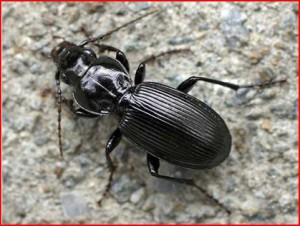
Black clock beetle (Pterostichus madidus) Source: http://commons.wikimedia.org/wiki/File:Pterostichus_madidus01.jpg
Like little workers, some species help to recycle rubbish and nutrients and many are important as prey for other invertebrates or birds and mammals. Others are important as pollinators for flowers.
Although most people have heard of honey bees and bumblebees, there are actually also over 200 species of solitary bees in the UK, all of which are important as plant pollinators and each species has its own fascinating way of life. The leafcutters, as their name suggests are a group that make nests for their eggs from leaves they cut away with their mouths. One of the species I found at Fallin Bing was Willoughby’s leafcutter (Megachile willughbiella), quite large for a solitary bee and with a very hairy underside to collect pollen for her offspring.
Another group I have been looking at are the Harvestmen. They have a strange appearance; with very long comical looking legs and eyes on a little turret. Despite being relatives of spiders, they lack a narrow waist between their two body parts and do not produce venom. They do however also eat small insects or decaying items. A favourite of mine is the Horn-palped harvestman (Phalangium opilio) whose male is very distinctive with horn like front limbs (see photo below). These creatures actually peak in numbers in autumn and are regularly seen during harvest time, which is where the name comes from.
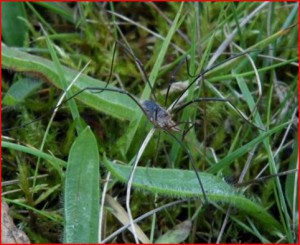
The Horn-palped harvestman (Phalangium opilio) among vegetation on the bing, the horns can just about be seen
An interesting spider I came across was the amusingly named ‘Hobo’ spider Tegenaria agrestis, similar in appearance to Tegenaria domestica, the long legged house spider that everyone is familiar with. Although it has only been recorded in the south of Scotland a few times, it is moving north and appears to favour brownfield sites, so the Hobo may be coming soon to vacant land near you!
My final outing as a Natural Talent Apprentice was on the 26th October when I attended the Scottish Arachnologists Meeting. This was an event to entice the spider enthusiasts of Scotland to descend upon Perth. It was a fantastic chance to meet other spider recorders and it was encouraging to see the enthusiasm of people from around Scotland for this fascinating group of animals. I had the opportunity to give a talk on brownfield biodiversity and some of the spider species I found during my surveys. It was a great way to end my apprenticeship by having the chance to share my findings and experiences to an eager audience. Hopefully I have convinced people that brownfield sites are not just waste ground, but in fact diverse landscapes where wildlife can thrive.
Thanks to Buglife, TCV and everyone who has helped me over the last year, now its time to see what the future brings.
Niall, Urban Biodiversity Apprentice

